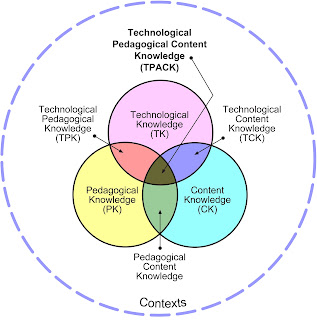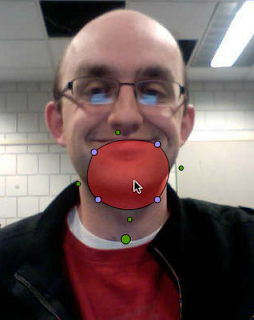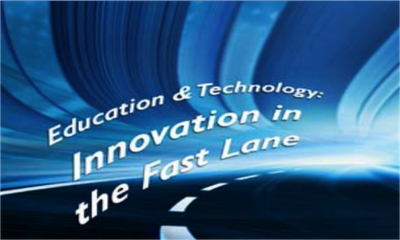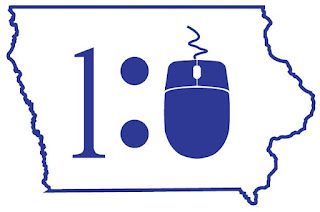 |
| Used w/permission from tpack.org - rights free |
As if this wasn't enough to boggle an educator's mind, the context within which it is being taught must also be considered. It is this context that determines relevancy to the student.
This is called TPaCK. TPaCK stands for
- Technology
- Pedagogy
- Content Knowledge
Pedagogic Content Knowledge by Dr. B - A good way to learn about PCK is through Dr. Bilash's website. Review her work and watch her two short videos to see the connection between Pedagogy and Content Knowledge. This may seem simple, but acknowledging the differences in the way a teacher understands content compared to a content expert is revealing.
Adding Technology to the PaCK: Acknowledging the connection between pedagogy and content knowledge, it is time to consider the medium through which this adapted content is presented/experienced. This medium is technology in the broadest sense of the word. It doesn't have to "plug in." The best way to experience a Van Gogh painting is in the Musee de Orsay museum in Paris. If you happen to be visiting Paris sometime soon, that might be possible. If your future plans involve staying around the house a little more, then there are other avenues available to you. This is where you can use various forms of technology to fill the bill. You could enjoy Van Gogh's The Church in Auvers-sur-Oise through a Post-Impressionism book, a Jigsaw Puzzle, a 360-degree Panorama inside the church,
a tour of the church and town, Wikipedia, even through a unique java-blend.
Whatever technology you select, it is the intersection of Pedagogy, Content Knowledge and Technology within a Context that will carry the message for the learner. It will determine the topic's relevance to the learner and ultimately learners interest in remembering and using the new information.
The key to the TPaCK method is examining the intersections between the domains. This would include Pedagogy-Content (PC), Technology-Content Knowledge (TC) and Technology-Pedagogy (TP). The most important point is the intersection of all of the domains TPC which we find at the middle of a 3-circle venn diagram.
This Low-Tech video explanation by RoyceKimmons is quite informative. He uses the 3-circle venn diagram to explain the relations of these domains.
Here are a couple of other videos to help reinforce the concept.
- Who Could Be a Good Teacher?
- TPACK Framework
- Defines this as a Wicked Problem. (Read Jeff Conklin's ideas)
Are You Looking for The Source?
Thinking Creatively: Teachers as designers of Content, Technology and Pedagogy by Mishra and Koehler at SITE 08. This is part 1 of a 3-part sequence of YouTube videos that describe the TPaCK from its creators.
Applying TPaCK to Digital Content
This theory is just great, but what about practical application? I can't get my head around how to make this happen in my classroom. I understand that I must teach World War II events using a pedagogy that is relevant to my population of students and that it should be conveyed using technology that is meaningful and engaging with my students. But is there a formula?
Probably not!
Activity Types
There are, however, Activity Types that have been developed by a group of researchers including Judi Harris, Mark Hofer, Denise Schmidt and Ann Thompson. Activity Types are conceptual planning tools that assist educators in organizing and creating curriculum-based learning activities. Each activity type captures what is most essential about the structure of a particular kind of learning action as it relates to what students do when engaged in that particular learning-related activity (e.g., group discussion; role play; fieldtrip). They have been organized by placing them in taxonomies.
TPACK Taxonomies
Dr. Judi Harris and Mark Hofer wrote a series of articles about using their subject-based taxonomies for TPACKING classroom projects Learning and Leading with Technology. (It is actually pgs 22 - 34.)
Harris, J., & Hofer, M. (2009). “Grounded” technology integration: Planning with curriculum-based learning activity types. Learning & Leading With Technology, 37(2), 22-25.
You can find a succinct table of the Activity Types arranged by Format of Expression in an article entitled:
Instructional Planning Activity Types as Vehicles for Curriculum-Based TPACK Development (.pdf)
More Specifically: The hierarchies used for 7 different subject areas are found on the William and Mary School of Education Activity Types wiki.
Here are some examples of how it has been done with a few lessons:
Using TPaCK to Teach Grammar in Middle School
Visit our WikiBook: TPACKing for a Wonderful Educational Trip
It contains all of the wonderful work completed by the Tech Coordinating groups.
This is a unique way to publish authentic information with your students.
Happy Traveling through TPACK.
Z





